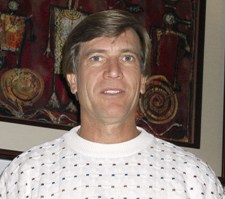He sounds a lot like Fred Rogers – as in Mr. Rogers’ Neighborhood. His voice is mellifluous and folksy, his cadence slow and thoughtful. It comes as no surprise that he grew up on a farm in South Dakota. The disconnect happens when he talks about fusion research, strategic management, technology ventures, information management software, and nuclear weapons.

Unlike Mr. Rogers, David Overskei has expertise in all those areas. He began as a fusion researcher at MIT and went on to senior management positions at General Atomics and Science Applications International Corporation, where Overskei’s wife, Katherine, MG ‘80, serves as vice president of human resources. He was also president and CEO of Polexis, a data-integration software company, before forming Decision Factors, his consulting firm in San Diego.
Since January 2005, Overskei has chaired the Nuclear Weapons Complex Infrastructure Task Force for the U.S. Department of Energy. The committee of six experts was commissioned by Secretary of Energy Samuel Bodman, ScD ‘65, to assess the state of the American nuclear weapons complex, comprised of eight facilities around the U.S. Their report, released last July, critiques the aging complex and recommends constructing one new facility to manufacture and refurbish bombs; moving the nation’s supply of plutonium and weapons-grade uranium to that facility; and developing new, more-reliable and secure bombs.
Don’t settle for half the story.
Get paywall-free access to technology news for the here and now.